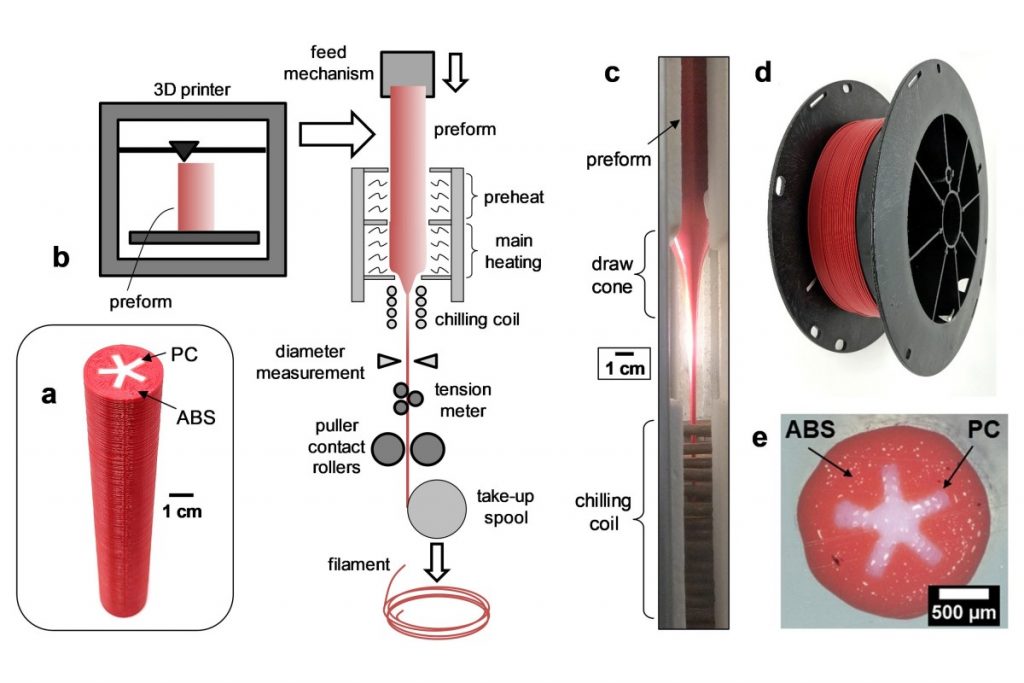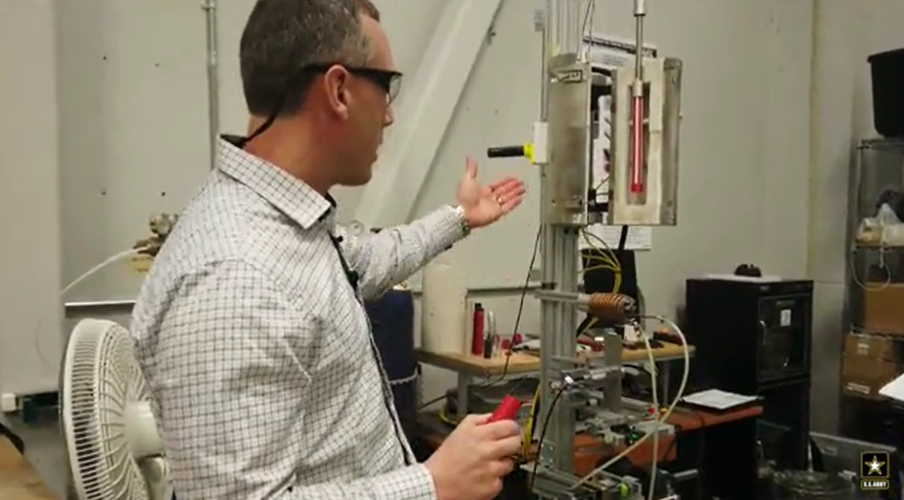New U.S. Army research has yielded a new multi-polymer filament designed to be used with low-cost FFF 3D printers. The high strength filament is expected to aid in the field of battle, producing mission critical parts in a timely manner at a fraction of the cost of traditional parts. The study was featured on the cover of the April edition of Advanced Engineering Materials.
Multi-thermoplastic filament
FFF is the most common 3D printing technology in use today due to its low barrier to entry and relatively low cost. Parts created using FFF tend to lack mechanical strength however, so their use in high-stakes field operations where they are subjected to the rigors of combat is generally advised against. The U.S. Army’s research aims to overcome the limitations of readily-available filament, instead creating something as robust as the warfighters who will use it.
The researchers combined ABS and polycarbonate (PC) to formulate their novel filament. A 3D printer was used to create a solid body pre-form, which consisted of a lower temperature ABS shell and a higher temperature star-shaped PC core. A thermal draw tower was then used to feed the solid pre-form through diameter and tension sensors, converting it back into a filament. That newly drawn filament was recycled back as feedstock, but this time it was a mixture of the ABS and PC, granting it superior mechanical properties. To finish the process, parts 3D printed from the new filament were annealed in an oven for 24-48 hours to completely fuse the layers together, adding extra structural integrity.
The 3D printed parts came out of the heat chamber with ductilities comparable to injection-molded ABS parts, and fracture toughness values 1500% (15x) higher than that of identical ABS geometries. The researchers concluded that the PC infusion aided in resisting heat-induced creep and maintained precise part dimensions during the annealing process. The team hopes to bring the annealing time down to four hours or less in the future.

Additive manufacturing on the field
Dr Eric Wetzel, co-author of the study, states that the Army is looking to print parts in the field to simplify logistics. By carrying digital files and raw materials, the need to lug around excessive physical parts would be eliminated. Unfortunately, the technologies for 3D printing high-strength parts have not been practical in an expeditionary setting to date. The printers are too large, require too much energy to operate, are fairly delicate in their builds, and their feedstocks require specialized storage conditions.
Jeff Wallace, a mechanical engineer with the Army’s C5ISR Center at APG, adds, “Having the option to additively manufacture parts from a high strength polymer via the FFF process, at the field, division, and/or depot level will certainly provide warfighters with the ability to produce better temporary parts much quicker – hours versus days or weeks – and at significantly lower costs – often pennies compared to tens of dollars.”
Wallace concludes: “Additionally, Soldiers tend to improvise as needed, often finding their own design solutions to the issues they face. As such, offering them a higher strength polymer material that can be used in the desktop printers they have access to, affords them the opportunity to innovate on-the-fly, as necessary to temporarily solve greater numbers of supply and design challenges. Their designs would then be sent to the proper Engineering Support Activity for evaluation.”

Further details of the study can be found in the paper titled ‘Tough, Additively Manufactured Structures Fabricated with Dual‐Thermoplastic Filaments’. It is co-authored by Kevin Hart, Ryan Dunn, and Eric Wetzel.
The U.S. armed forces have a history of employing additive manufacturing to produce parts and conduct research for their field operations. Earlier this year, the U.S. Army announced that it was working towards developing its supply chain to support the integration of additive manufacturing. More recently, the Army commenced collaborative research with the University of Delaware to 3D print high temperature composites using a Roboze ARGO 500 3D printer.
The nominations for the 2020 3D Printing Industry Awards are now open. Who do you think should make the shortlists for this year’s show? Have your say now.
Subscribe to the 3D Printing Industry newsletter for the latest news in additive manufacturing. You can also stay connected by following us on Twitter and liking us on Facebook.
Looking for a career in additive manufacturing? Visit 3D Printing Jobs for a selection of roles in the industry.
Featured image shows process of 3D printing the pre-form and drawing the filament. Image via U.S. Army.



